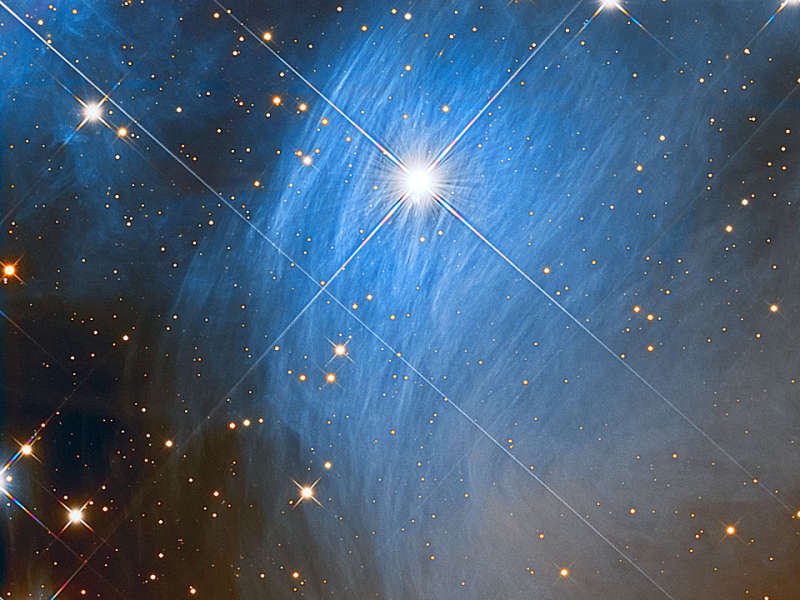Credit & Copyright: Leonardo Orazi
Explanation:
Reflection nebulas reflect light from a nearby star.
Many small carbon
grains in the nebula reflect the light.
The blue color typical of reflection nebula is caused by blue light being
more efficiently scattered by the carbon
dust than red light.
The brightness of
the nebula is determined by the
size and density of the reflecting grains,
and by the color and brightness of the neighboring star(s).
NGC 1435,
pictured above, surrounds
Merope
(23 Tau), one of the brightest stars in the
Pleiades (M45).
The Pleiades nebulosity is caused
by a chance encounter between an
open cluster of stars and a dusty
molecular cloud.
1999 2000 2001 2002 2003 2004 2005 2006 2007 2008 2009 2010 2011 2012 2013 2014 2015 2016 2017 2018 2019 2020 2021 2022 2023 2024 2025 |
Yanvar' Fevral' Mart Aprel' Mai Iyun' Iyul' Avgust Sentyabr' Oktyabr' Noyabr' Dekabr' |
NASA Web Site Statements, Warnings, and Disclaimers
NASA Official: Jay Norris. Specific rights apply.
A service of: LHEA at NASA / GSFC
& Michigan Tech. U.
|
Publikacii s klyuchevymi slovami:
Merope - reflection nebula - molecular cloud - Meropa - otrazhatel'nye tumannosti - Molekulyarnye oblaka
Publikacii so slovami: Merope - reflection nebula - molecular cloud - Meropa - otrazhatel'nye tumannosti - Molekulyarnye oblaka | |
Sm. takzhe:
Vse publikacii na tu zhe temu >> | |
